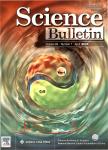Clay minerals in paleosols of cretaceous age in Istria,Croatia
Clay minerals in paleosols of cretaceous age in Istria, Croatia作者机构:University of Agricultural Sciences ViennaDepartment of Applied GeologyPeter Jordan Strasse 70 A1190.ViennaAustria University of ZagrebFaculty of mininggeology and petroleum engineeringPierottijeva 6HR-10000 ZagrebCroatia
出 版 物:《Chinese Science Bulletin》 (科学通报(英文版))
年 卷 期:1999年第44卷第S1期
页 面:145-151页
学科分类:070903[理学-古生物学与地层学(含:古人类学)] 0709[理学-地质学] 07[理学]
主 题:Istria paleosols clay minerals illitization fining upwards sequences subaerial exposure
摘 要:Greenish clays often occur as thin layers in Early Cretaceous shallow-water carbonatesediments of Istria where they mark the top of fining upwards sequences. When they showevidence of subaerial exposure and pedogenesis they are considered paleosols. The claymineralogical composition is as follow: (1) randomly oriented I/S mixed layer, (2) regularlyoriented I/S mixed layer, (3) illitic material, (4) kaolinite and (5) chlorite. The insoluble limestoneresidue situated immediately below the greenish clays is dominated by smectite, and also containskaolinite and illitic material. The very high smectite content in the insoluble residue is probablythe result of additions of volcanic dust during carbonate sedimentation. That clay mineralcomposition in the pelitic material clearly indicates the influence of both pedogenic and diageneticprocesses. It may also indicate additional volcanic dust contribution before and during thesubaerial exposure.



